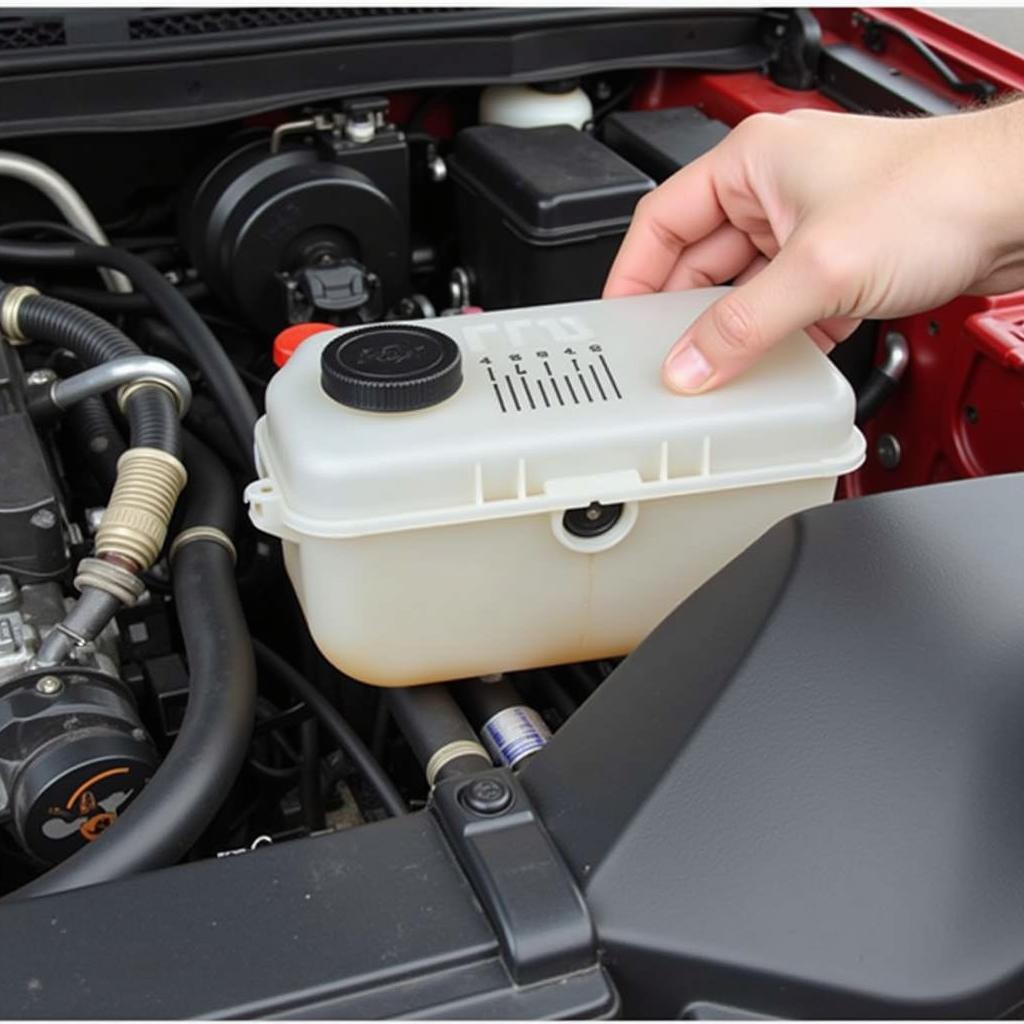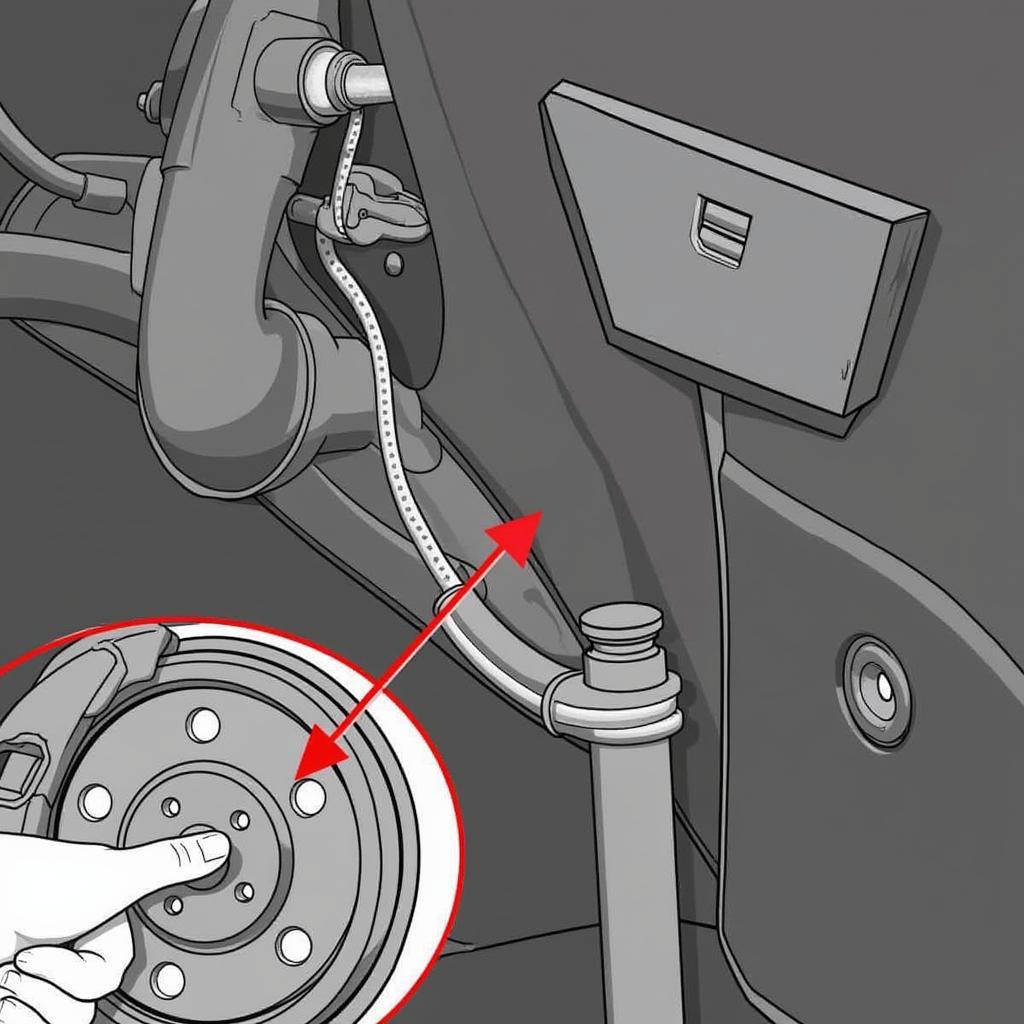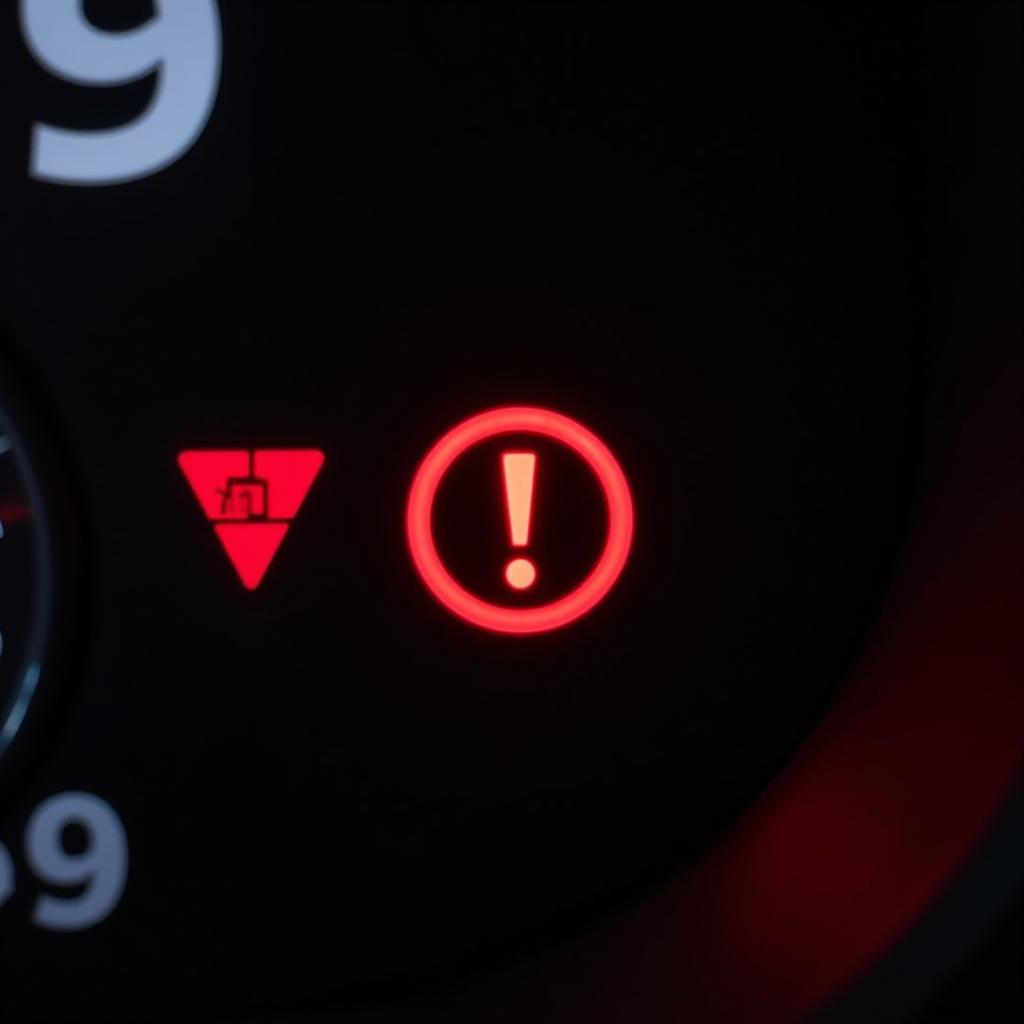The Chrysler Sebring brake warning light can be a jarring sight, signaling potential issues with your braking system. Understanding the reasons behind this warning light is crucial for maintaining safe driving conditions. This article provides a comprehensive guide to troubleshooting and resolving the Chrysler Sebring brake warning light issue, covering everything from simple checks to more complex diagnostic procedures.
If your Chrysler Sebring brake warning light illuminates while driving, it’s essential to address the problem promptly. This light could indicate a range of issues, from low brake fluid to more serious problems like a malfunctioning ABS system. Check the brake fluid level first. It’s often the easiest fix. 2008 chrysler sebring brake warning light offers specific information for this model year.
Understanding Your Chrysler Sebring Brake System
The brake system in your Chrysler Sebring is a complex network of components working together to ensure safe and efficient stopping power. Key elements include the master cylinder, brake lines, calipers, rotors, and brake pads. The brake warning light acts as a crucial indicator of potential issues within this system.
Common Causes of the Brake Warning Light
Several factors can trigger the brake warning light in your Chrysler Sebring. Understanding these common causes can help you narrow down the problem and take appropriate action.
- Low Brake Fluid: This is the most frequent culprit. A leak in the brake lines or worn brake pads can lead to low brake fluid levels.
- Worn Brake Pads: Thin brake pads can activate the warning light.
- Faulty Brake Sensor: A malfunctioning brake pad wear sensor can trigger the light even if the pads are still in good condition.
- ABS Issues: Problems with the Anti-lock Braking System (ABS) can also illuminate the warning light.
- Parking Brake Engaged: Sometimes, simply forgetting to disengage the parking brake can trigger the light.
brake warning light while driving explores common reasons why the light might come on during operation.
Diagnosing the Problem
Proper diagnosis is essential for effective repair. Here are some steps to pinpoint the cause of your Chrysler Sebring brake warning light:
- Check the Parking Brake: Ensure the parking brake is fully released.
- Inspect Brake Fluid Level: Check the brake fluid reservoir. If the level is low, add brake fluid and inspect for leaks.
- Examine Brake Pads: Visually inspect the brake pads for wear. If they appear thin, replacement is necessary.
- Check Brake Lines: Inspect the brake lines for any signs of leaks or damage.
 Checking Brake Fluid Level in Chrysler Sebring
Checking Brake Fluid Level in Chrysler Sebring
DIY Fixes and When to Seek Professional Help
Some brake warning light issues can be resolved with simple DIY fixes, while others require professional assistance.
Simple Fixes
- Topping off Brake Fluid: If the fluid is low, adding brake fluid is a straightforward fix. However, persistent low fluid levels indicate a leak that requires professional attention.
- Releasing the Parking Brake: If the parking brake is engaged, releasing it should resolve the issue.
When to Consult a Professional
- Brake Line Leaks: Repairing brake lines requires specialized tools and knowledge.
- ABS Issues: Diagnosing and repairing ABS problems often necessitates advanced diagnostic equipment.
- Replacing Brake Pads and Rotors: While possible as a DIY project, professional replacement ensures proper installation and functionality.
- Persistent Brake Warning Light: If the warning light remains illuminated after basic checks, consult a qualified mechanic.
brake warning light on while driving provides additional guidance on when professional help is needed.
“Ignoring a brake warning light can lead to serious safety risks,” says automotive expert, Michael Stevens, ASE Certified Master Technician. “Prompt diagnosis and repair are essential for maintaining optimal braking performance.”
Preventing Future Brake Issues
Regular maintenance can help prevent future brake warning light occurrences.
- Routine Brake Inspections: Regularly inspect your brakes for wear and tear.
- Brake Fluid Flushes: Flush your brake fluid according to your vehicle’s maintenance schedule.
- Quality Brake Pads: Invest in high-quality brake pads for improved performance and longevity.
2008 sebring brake warning light offers more information regarding specific maintenance schedules for this model.
 Checking Chrysler Sebring Brake Lines for Leaks
Checking Chrysler Sebring Brake Lines for Leaks
“Preventive maintenance is key to ensuring the long-term health of your Chrysler Sebring’s braking system,” advises automotive consultant, Sarah Miller, Certified Automotive Service Excellence Advisor. “Regular checks and fluid changes can significantly reduce the risk of future problems.”
Conclusion
Addressing the Chrysler Sebring brake warning light promptly is vital for safe driving. By understanding the potential causes and following the diagnostic steps outlined in this article, you can effectively troubleshoot the issue and ensure your braking system is in optimal condition. Don’t hesitate to seek professional help if necessary, especially for complex issues like ABS problems or brake line leaks. Regular maintenance is crucial for preventing future brake issues and ensuring safe driving conditions for you and your passengers. Remember, your safety is paramount, so never ignore the Chrysler Sebring brake warning light.
FAQ
- What is the most common cause of the Chrysler Sebring brake warning light? Low brake fluid is the most frequent reason.
- Can I drive my Chrysler Sebring with the brake warning light on? It’s highly discouraged. The warning light indicates a potential issue with your brakes, which could compromise your safety.
- How often should I check my brake fluid level? Check your brake fluid level at least once a month and before any long trips.
- How long do brake pads typically last? Brake pad lifespan varies depending on driving habits and conditions, but they generally last between 25,000 and 70,000 miles.
- What is the cost of replacing brake pads and rotors? The cost varies depending on the make and model of your vehicle and the specific parts used. Consult a mechanic for an accurate estimate.
- How do I know if my ABS system is malfunctioning? Besides the brake warning light, other signs of ABS issues include a pulsating brake pedal or unusual noises during braking.
- Can I top off brake fluid myself? Yes, you can top off brake fluid yourself. However, if you frequently need to add fluid, it indicates a leak that requires professional attention.

